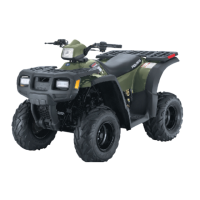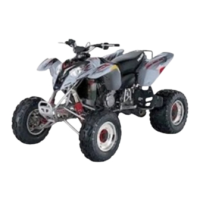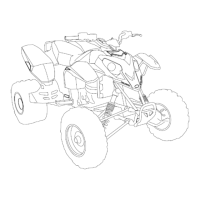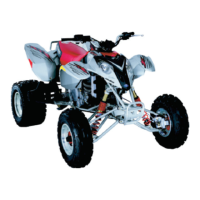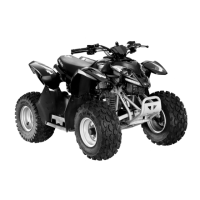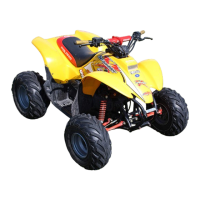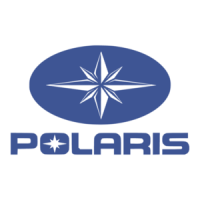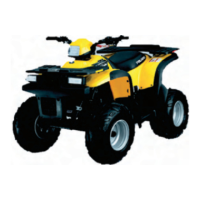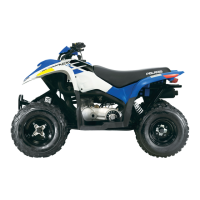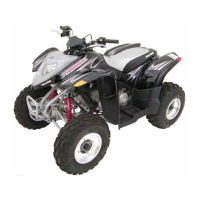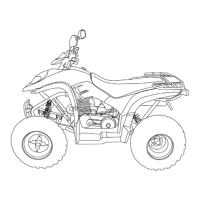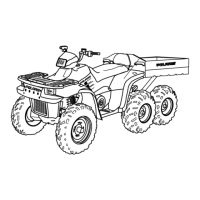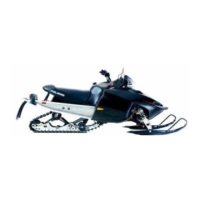147
Maintenance
Carburetor Adjustments
Your Polaris ATV is calibrated at the factory for optimal performance at altitudes ranging
from zero t o 6,000 feet (1800 m) and temperatures of + 40 degrees F. (4 degrees C.) or
higher.
Above 6000 feet (1800 m) the engine air/fuel mixture becomes overly rich and the engine
loses approximately 3% of its power for each 1000-foot (304.8 m) increase in elevation.
Although this power cannot be regained, adjustments to t he carburetor and drive system can
be made to allow more efficient operation.
Optional jets, available from your Polaris dealer, are required for operation above 6, 000 feet
and temperatures below +40 degrees F. (4 degrees C.) NOTE: C ontinuous operation of
the engine without proper jetting when required can cause poor performance, overheating or
engine damage. See your Polaris dealer for more information about jetting the ATV for
conditions in your area.
